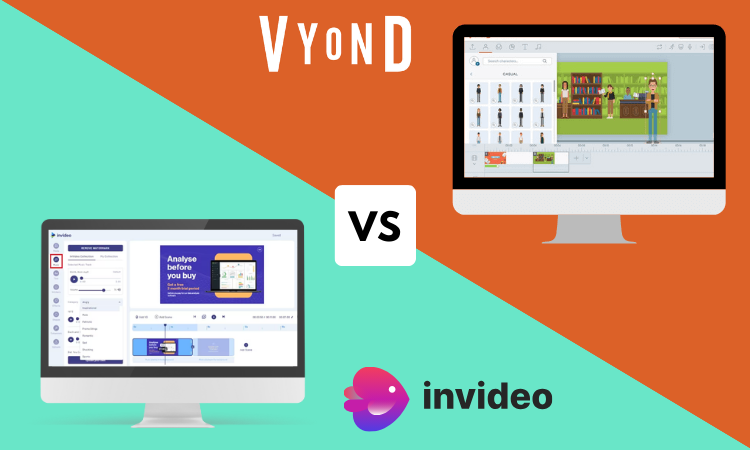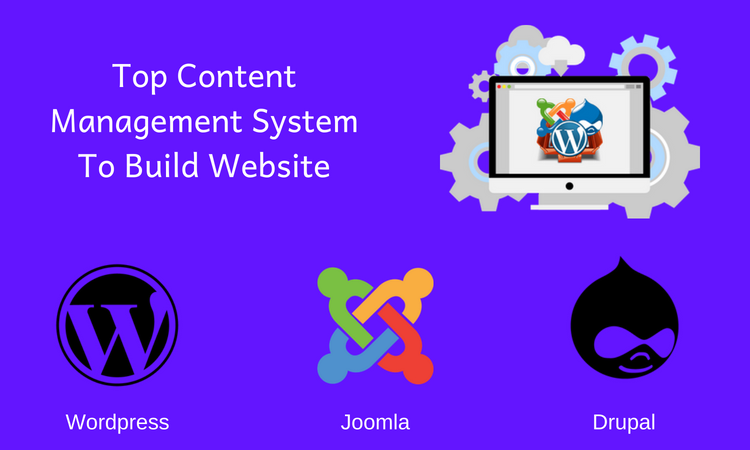
Vyond vs Invideo: In the dynamic world of digital content creation, the demand for compelling videos has surged. Whether you’re a content creator, marketer, educator, or business owner, the ability to craft engaging videos is paramount. Vyond and Invideo are two prominent contenders in the realm of video editing and animation software, each offering a unique set of features and capabilities.
This comprehensive comparison post aims to guide you through the intricacies of Vyond and Invideo, empowering you to make an informed decision about which software best suits your needs. We will delve into various aspects, from user interface and features to pricing, support, and beyond, leaving no stone unturned in our quest to help you choose the right tool for your video production endeavors.
In the following sections, we will break down these two platforms, highlighting their strengths and weaknesses, and provide a side-by-side analysis of their key attributes. Whether you’re a novice seeking a user-friendly video creation solution or a seasoned professional looking for advanced editing tools, this Vyond vs. Invideo comparison will serve as your compass in the vast sea of video editing software.
So, whether you’re crafting marketing videos, educational content, social media clips, or any other type of video, let’s embark on this journey to explore Vyond and Invideo in-depth, allowing you to harness the full potential of these tools for your creative and business endeavors. Let’s dive right in and see how these platforms stack up against each other.
User Interface:
Vyond:
- Vyond boasts an exceptionally user-friendly interface, which is particularly welcoming to beginners or those with limited animation experience.
- The platform employs a drag-and-drop interface, allowing users to easily add and manipulate objects, characters, and text within their videos.
- Vyond’s interface is designed to be highly intuitive, featuring a library of pre-built assets, making it straightforward to create animations without the need for extensive design skills.
- The workspace is organized, with clear menus and options for character customization, scene building, and timeline control.
Invideo:
- Invideo, too, offers an intuitive user interface with a timeline-based editor.
- The timeline editor will be familiar to users who have experience with video editing software, making it an accessible choice for those transitioning from other video editing tools.
- Invideo’s interface is optimized for quick video production, allowing users to seamlessly add text, transitions, effects, and audio to their projects.
- The workspace includes a media library with an extensive collection of stock footage, music, and images, streamlining the content discovery process.
Features:
Vyond:
- Customizable Assets: Vyond provides a diverse selection of customizable characters, props, and templates. Users can tailor these assets to suit their video’s theme and message.
- Animation Styles: Vyond supports various animation styles, including whiteboard animations, 2D animations, and video infographics. This versatility enables users to create different types of engaging content.
- Templates and Music: Vyond offers a library of pre-built templates and a collection of music tracks, simplifying the video creation process by providing ready-made resources.
- Character Animation: Vyond excels in character animation, allowing users to animate characters with ease. Features like lip-syncing and character movements enhance the storytelling capabilities.
Invideo:
- Template Variety: Invideo offers a wide variety of templates designed for different video types, such as promotional videos, social media content, and more. These templates serve as starting points for users’ projects.
- Media Library: Invideo’s extensive media library includes a wealth of stock footage, music, and images, empowering users to enhance their videos with professional-quality content.
- Text-to-Speech: Invideo stands out with its text-to-speech functionality, enabling users to generate voiceovers directly within the platform. This feature can save time and resources.
- Advanced Editing: Invideo caters to users seeking advanced video editing capabilities. It includes features like transitions, effects, and text animations, allowing for creative and polished video production.
In summary, both Vyond and Invideo offer user-friendly interfaces, making them accessible choices for video creation. Vyond shines in character animation and customization, making it a go-to solution for animations and storytelling. In contrast, Invideo is well-suited for those seeking diverse templates, a vast media library, and advanced video editing features. Your choice between the two will depend on your specific project needs and your level of animation and editing expertise. Both platforms provide free trials, allowing you to experiment with them to determine which aligns best with your goals.
Ease of Use:
Both Vyond and Invideo prioritize user-friendliness, making them accessible to a wide range of users, from beginners to experienced video creators.
- Vyond: Vyond boasts an interface that is particularly welcoming to beginners. Its strength lies in its simplicity, especially in creating character animations. Users can easily drag and drop characters, props, and scenes onto the canvas, and the platform provides a straightforward timeline for sequencing animations. This makes Vyond an excellent choice for those who are new to animation or video creation.
- Invideo: Invideo also offers an intuitive user interface, although it leans slightly more toward video editing than character animation. The platform’s timeline-based editor is reminiscent of traditional video editing software, which can be advantageous for users already familiar with these tools. While it may require a slightly steeper learning curve for absolute beginners, Invideo compensates with its versatility in text animations, transitions, and effects.
Customization:
Both Vyond and Invideo excel in customization, but their focus areas differ:
- Vyond: Vyond shines when it comes to customizing character animations and movements. Users have a wide array of options for personalizing character appearances, emotions, and actions. This makes Vyond a strong choice for storytelling and character-driven animations. The platform also supports lip-syncing and precise character interactions.
- Invideo: Invideo’s strength lies in customizing text animations, transitions, and effects. While it may offer character animations, they are not as detailed and versatile as Vyond’s. Invideo is more suitable for creating video content that heavily relies on text overlays, graphical elements, and sophisticated transitions. It empowers users to add professional touches to their videos through its text animation and transition libraries.
Export Options:
Both Vyond and Invideo provide various export options, ensuring compatibility with different platforms and use cases:
- Vyond: Vyond offers flexibility in exporting videos. Users can export their creations in formats such as MP4 and GIF, which are widely accepted on most video-sharing platforms and websites. This flexibility allows users to adapt their content to various distribution channels.
- Invideo: Invideo provides similar export options, including the commonly used MP4 format. However, Invideo also offers direct publishing to social media platforms like Facebook, YouTube, and Instagram. This feature streamlines the process of sharing your content on these platforms, eliminating the need for manual uploads.
In conclusion, the choice between Vyond and Invideo hinges on your specific needs and proficiency in video creation. Vyond’s simplicity and focus on character animation make it ideal for beginners and those who prioritize storytelling with animated characters. In contrast, Invideo’s strength in text animations, transitions, and its direct social media publishing feature make it a solid choice for users seeking versatile video editing capabilities for a wide range of video types. Ultimately, the choice depends on your project requirements and familiarity with these tools.
Pricing:
Vyond: Vyond offers a tiered pricing structure to cater to various user needs:
- Essential: This is Vyond’s basic plan, suitable for individuals or small businesses. It provides access to the core animation features, a limited library of templates, and the Vyond watermark on videos. Pricing for this plan typically starts at a monthly or annual subscription fee.
- Business: The Business plan is designed for larger organizations and offers an extensive library of templates, the ability to remove the Vyond watermark, and priority customer support. Pricing varies based on the number of users and duration of the subscription.
- Enterprise: Vyond’s Enterprise plan is customizable to meet the specific needs of large enterprises. It includes advanced security features, single sign-on (SSO) integration, and dedicated account management. Pricing is available upon request and depends on the organization’s requirements.
Invideo: Invideo offers a tiered pricing structure:
- Free: Invideo provides a limited free plan with basic features, but it includes a watermark on exported videos.
- Business: The Business plan is designed for small to medium-sized businesses and content creators. It offers access to a vast media library, no watermark on videos, and the ability to export videos in higher resolutions. Pricing for this plan is billed monthly or annually and is more affordable compared to Vyond’s Business plan.
- Unlimited: Invideo’s Unlimited plan caters to users with higher demands for video production. It includes unlimited access to premium media, priority support, and team collaboration features. Pricing is typically billed monthly or annually.
Support:
Vyond:
- Vyond provides customer support primarily through email, making it easy to submit queries and issues.
- They also offer a comprehensive knowledge base that includes tutorials, FAQs, and guides to help users navigate the platform and troubleshoot common problems.
Invideo:
- Invideo offers a chat support feature, allowing users to engage with customer support in real-time for quick assistance.
- Similar to Vyond, Invideo maintains a knowledge base with articles, tutorials, and resources to assist users in using their platform effectively.
Collaboration:
Both Vyond and Invideo understand the importance of collaboration in video creation:
Vyond Collaboration:
- Vyond allows multiple users to collaborate on the same project, making it suitable for teams working on animated videos.
- Team members can have different levels of access and permissions, ensuring efficient workflow management.
Invideo Collaboration:
- Invideo also supports collaboration, enabling multiple users to work on video projects simultaneously.
- Collaboration features include the ability to invite team members, assign roles, and streamline the video creation process.
In summary, both Vyond and Invideo offer tiered pricing structures to accommodate various user needs, with Vyond typically targeting larger enterprises and Invideo offering more cost-effective options for smaller businesses and individuals. Support is available through email for Vyond and chat for Invideo, both supplemented by knowledge bases. Collaboration features in both platforms facilitate teamwork and project management, making them suitable for collaborative video production projects. Your choice should depend on your specific budget, feature requirements, and support preferences.
Mobile Accessibility:
Invideo: Invideo offers a dedicated mobile app, available for both iOS and Android devices. This mobile app is a valuable asset for users who require the flexibility to edit videos on the go. It allows you to create, edit, and export videos directly from your smartphone or tablet. This can be especially useful for content creators, social media managers, and marketers who need to quickly respond to trends and engage with their audience while away from their computer. The mobile app provides a simplified version of the Invideo editor, optimized for touchscreens, making it accessible and convenient for mobile video editing.
Vyond: Vyond, on the other hand, does not offer a dedicated mobile app. While you can access Vyond’s web-based platform from a mobile device’s web browser, the experience may not be as smooth or intuitive as using a dedicated mobile app. Users may find it challenging to perform detailed animations and precise edits on smaller screens, limiting the software’s usability when on the go.
Integration:
Both Vyond and Invideo offer integrations with popular platforms like YouTube, Vimeo, and social media channels.
Vyond: Vyond provides integrations with various platforms, making it convenient for users to publish their animated videos and content directly to platforms like YouTube and Vimeo. This seamless integration streamlines the process of sharing your creations with your target audience, ensuring a wider reach for your videos. Vyond also offers the ability to export videos in formats compatible with social media, simplifying the sharing process across various platforms.
Invideo: Invideo also offers integrations with popular platforms, including YouTube, Vimeo, and various social media channels. These integrations enable users to export their edited videos and publish them directly to their chosen platforms. Invideo’s integration capabilities are especially beneficial for content creators and marketers who want to create and distribute engaging videos across multiple online channels efficiently.
Free Trial:
Both Vyond and Invideo offer free trials, allowing users to test their platforms before committing to a subscription.
Vyond: Vyond provides a free trial period during which users can explore the platform’s features and capabilities. This trial period is typically limited in terms of the features and options available, but it offers a good opportunity to get a feel for the software’s interface and basic functionalities. Users can use the trial to assess whether Vyond aligns with their video creation needs and decide if they wish to subscribe to a paid plan.
Invideo: Invideo also offers a free trial period that allows users to experiment with the software and evaluate its capabilities. This trial period provides access to a range of features, templates, and editing tools, giving users a comprehensive look at what Invideo has to offer. It’s a valuable opportunity to create and edit videos to assess if Invideo suits their specific video production requirements before making a subscription commitment.
In summary, while both Vyond and Invideo offer free trials and integrations with popular platforms, Invideo has a distinct advantage in terms of mobile accessibility due to its dedicated mobile app, making it a strong choice for users who need to edit videos while on the move. Users should consider their individual preferences, video editing needs, and the importance of mobile access when choosing between these two software options.


